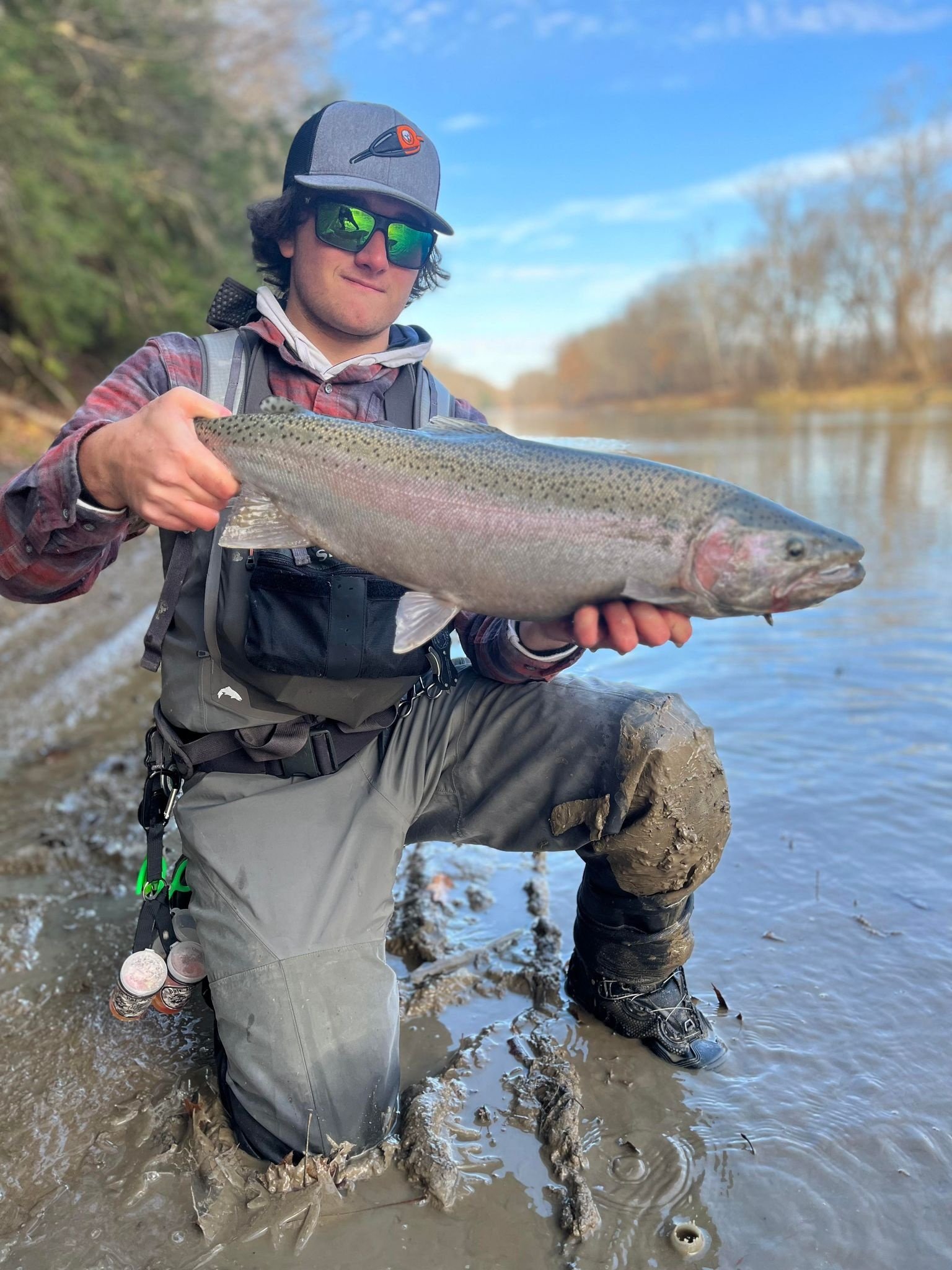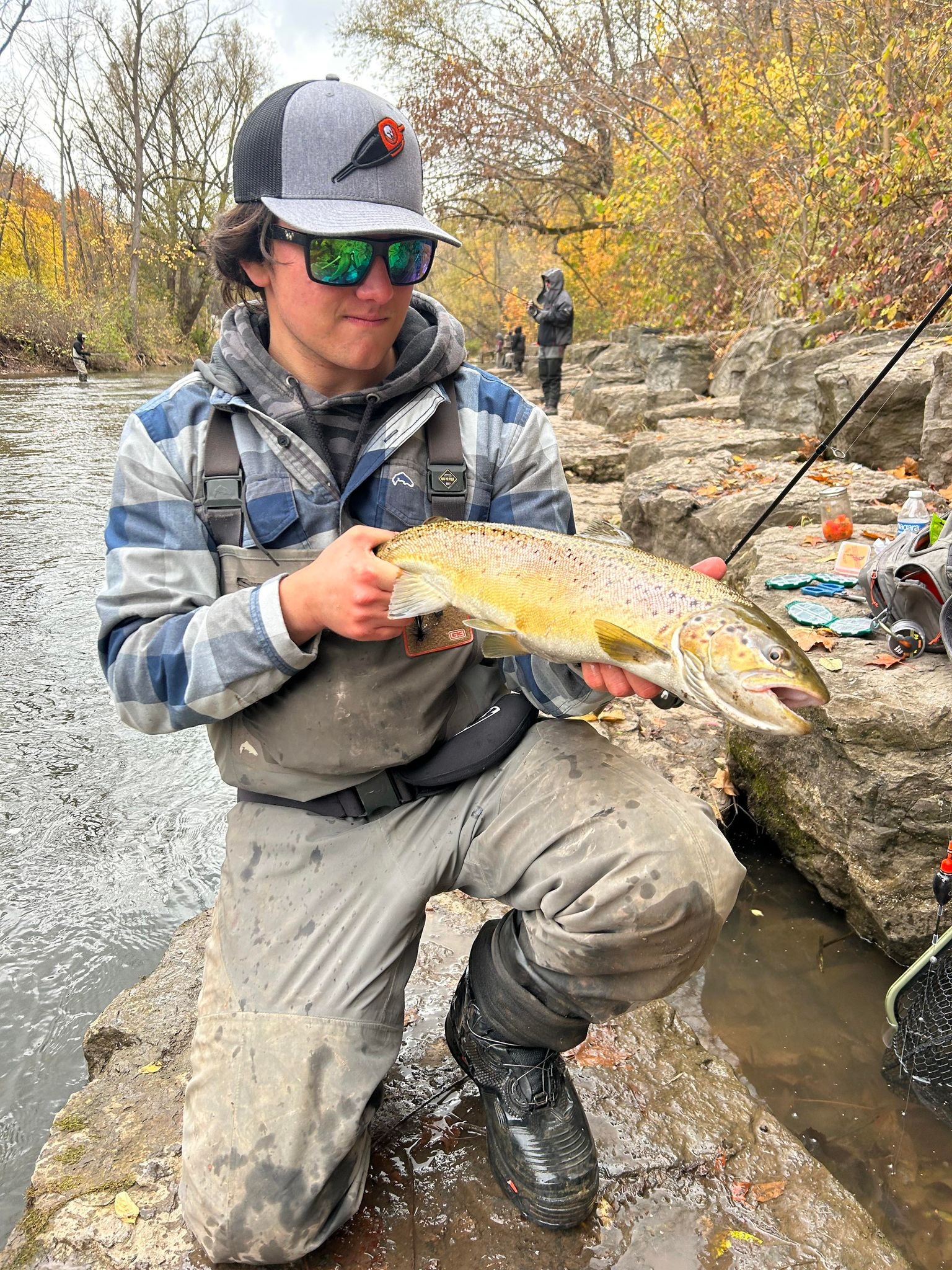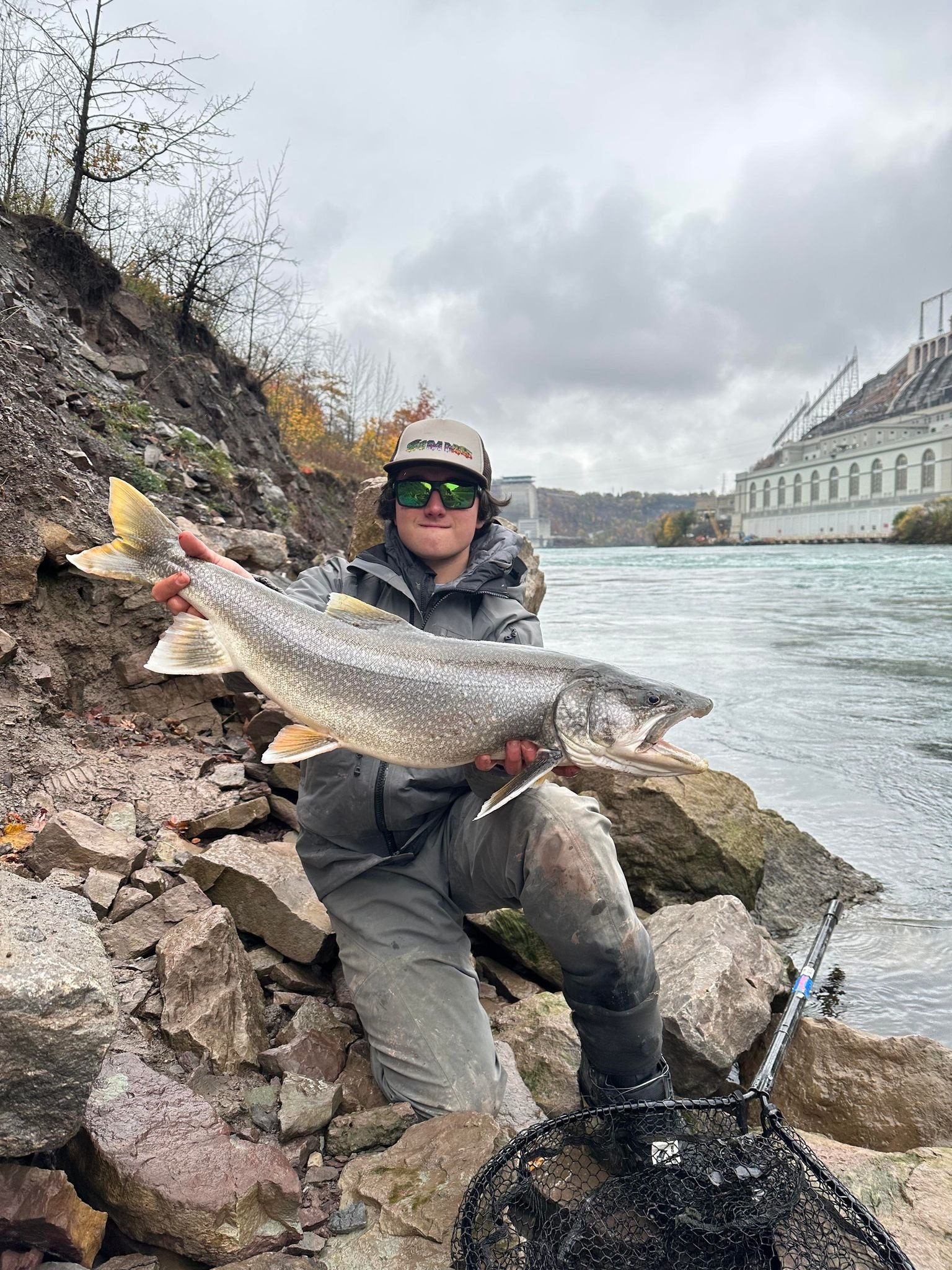What Is Centerpin Fishing? The Basics To Get Started
- Posted on
- By Mike Haraschak
- Posted in centerpin, float fishing
- 0

Mike Haraschak dives into the basics of centerpin fishing and what you need to know to get started.
Intro to Centerpin Fishing
Over the past couple of decades, centerpin fishing has been slowly introduced throughout the United States and Canada, and just recently, this exciting technique has really exploded. These reels originated in Europe in the early 1900s, where fishermen would use them in their waterways for trout, pike, carp, etc. Over time, centerpins made their way into Canada, where they became a favorite for trout, steelhead, and salmon fishing. Word got out about how effective these reels were for float fishing and we got our hands on them here in the States. Since then, centerpin fishing has become a staple in the trout, salmon, and steelhead fishing industry.
What is A Centerpin Reel:
A Centerpin Reel is a very simple reel. It’s a round spool that slides over a “pin”, which is attached to a backplate. A bearing is placed on both sides of the inner spool and there is generally no drag on these reels. Instead, you use your hand as the drag, palming the spool for extra tension. This allows for a super smooth, drag free drift while presenting your bait underneath a float. An entry level centerpin set up starts out at about $150- $200, but some high-end, or custom, rods and reels can sell for thousands. Some of my favorites here at Tackle Shack are the Okuma Sheffield, Kingpin Kinetic, and the Kingpin Imperial.
Basics of Centerpin Fishing
If you’re just starting out, the list of tackle needed isn’t crazy. You will need:
- Centerpin Reel
- Float Rod
- Mono Mainline (7-20lb)
- Backing (20lb braid or backing)
- Floats
- Round Split Shot
- Micro Barrel Swivels
- Fluorocarbon Leader
- Hooks
- Bait of Your Choice
Your main goal of centerpinning is to create the most natural presentation possible while fishing in current. This is done by pairing your reel with a long “float” style rod. These rods typically range anywhere from 11’ to 15’, with the most popular models measuring 11’ to 13’6”. Some of my favorite float rods at Tackle Shack include the Okuma Aventa, TFO Steeldriver, and the St. Croix Onchor. The length of the rod is important to keep the most amount of line off the water as possible. Keeping line off the water prevents it from dragging on the surface and ruining the natural presentation that you’re trying to achieve. Longer rods tend to be better for bigger waters. The way centerpins are designed, your float should always drift at the same speed as the surface current. You can slow your presentation down by gently feathering the spool of the reel with your hands. The rig should have a pendulum effect in the water. You want your bait to shoot out in front of the float so that it is the first thing the fish sees coming at them. Generally floats are rated in grams(4 gram, 7 gram, 15 gram, etc.). Match the rating of the float with the same amount of split shot ensuring your float rides correctly in the water column. This gives you a great drift and the fish doesn’t feel any resistance as they take your offering. Always match your float size to the water conditions accordingly. Below, I will dive into how to properly rig up for a various water conditions.
Rigging:
A centerpin reel setup consists of couple hundred yards of backing, or braided line, followed by a monofilament float line, and a leader. My favorite mainline to use is the Fine Float II from Sunline (Now replaced by Iso Special Fine Float). Brightly colored float lines make tracking the line easier. The float is attached to your mainline. Most floats come with little pieces of rubber tubing included (picture below). Slide both pieces of tubing onto your mainline, then attach one piece of tubing to the top stem of the float and the other piece to the bottom of the float. Some of my favorite floats are made by Sheffield, Fishin Freekz, and Hawken.
Next you will put your split shot below your float. How much split shot you’re using determines the size float you’ll need. Most brands of split shot will have the weight of the different shot sizes labeled in grams as well, making pairing the two very simple. For instance, a 10g float, can support 10g of weight. The bottom current is always slower than the surface current. Place your heavier shot up closer to the float to help slow the float down, and then stagger your shot down the mainline and end with your lightest shot near the swivel or even on your leader line. This ensures your bait is presented in front of everything else. After you have all your split shot on, tie on a barrel swivel. Blackbird and Fishin Freekz both make a really nice micro barrel swivel. From the barrel swivel tie on your leader line. My favorite leader line to use is Super FC Sniper from Sunline. Always make sure that your mainline is at least 2lbs heavier than your leader line, so that if you snag up, your leader will break before your mainline and you don’t have to re-rig everything(Pay attention to the diameter of the lines as opposed to the line rating, as different brands will rate the same line rating differently). Finally, tie on your hook. The TroutBeads Bead Hooks are a great option, along with the BKK ALLROUNDER-SS. To finish it off, you need bait. The most popular baits for centerpinning include beads, egg sacks, and marabou jigs. TroutBeads and Death Roe make some very nice beads.
Shallow/Slow Water Rig(1-2ft of water)
For this scenario, use a lighter(1-3gram) float and have almost all your split shot bulked up right underneath your float. This is so that your shot doesn’t spook fish and the bait still has the most natural look possible. Marabou jigs and egg sacs are great choices for these conditions. Pair this with a lighter leader, generally 4-6lb test.

Moderate Current/Depth Rig(3-8ft of water)
This is where you want to pay attention to your rigging the most. A little heavier float, about 4-10 gram, would be best based on how deep the hole is. Shot pattern is very important in this scenario. Start with your heaviest right below your float and stagger your shot, increasingly going down in size as you make it closer to your swivel. You’ll want to run a little heavier leader(6-10lb). Beads, jigs and egg sacs are going to be your best bet given these conditions.

Fast/Deep Water Rig(10+ft of water)
In fast/deep water, you are going to want a heavy float(12-30gram). Many anglers will opt for a slip float in these conditions. A slip float makes for easier casting if you’re fishing this deep. You want to have almost all of your split shot bulked up right above your barrel swivel so that your bait gets down into the strike zone really quick. Some will even use an inline trolling weight instead of having to use a bunch of shot. Use a stronger leader. Anything between 8 and 15lb should be good. Beads and jigs are best for this type of water.

Niagara River Lake Trout
If you’re just getting into centerpin fishing, we’re here to help. From shot patterns and float choice to the best baits to use, we’re here to answer your questions 7 days a week. Follow me on instagram @mike.haraschak


Great information..Thank You !!